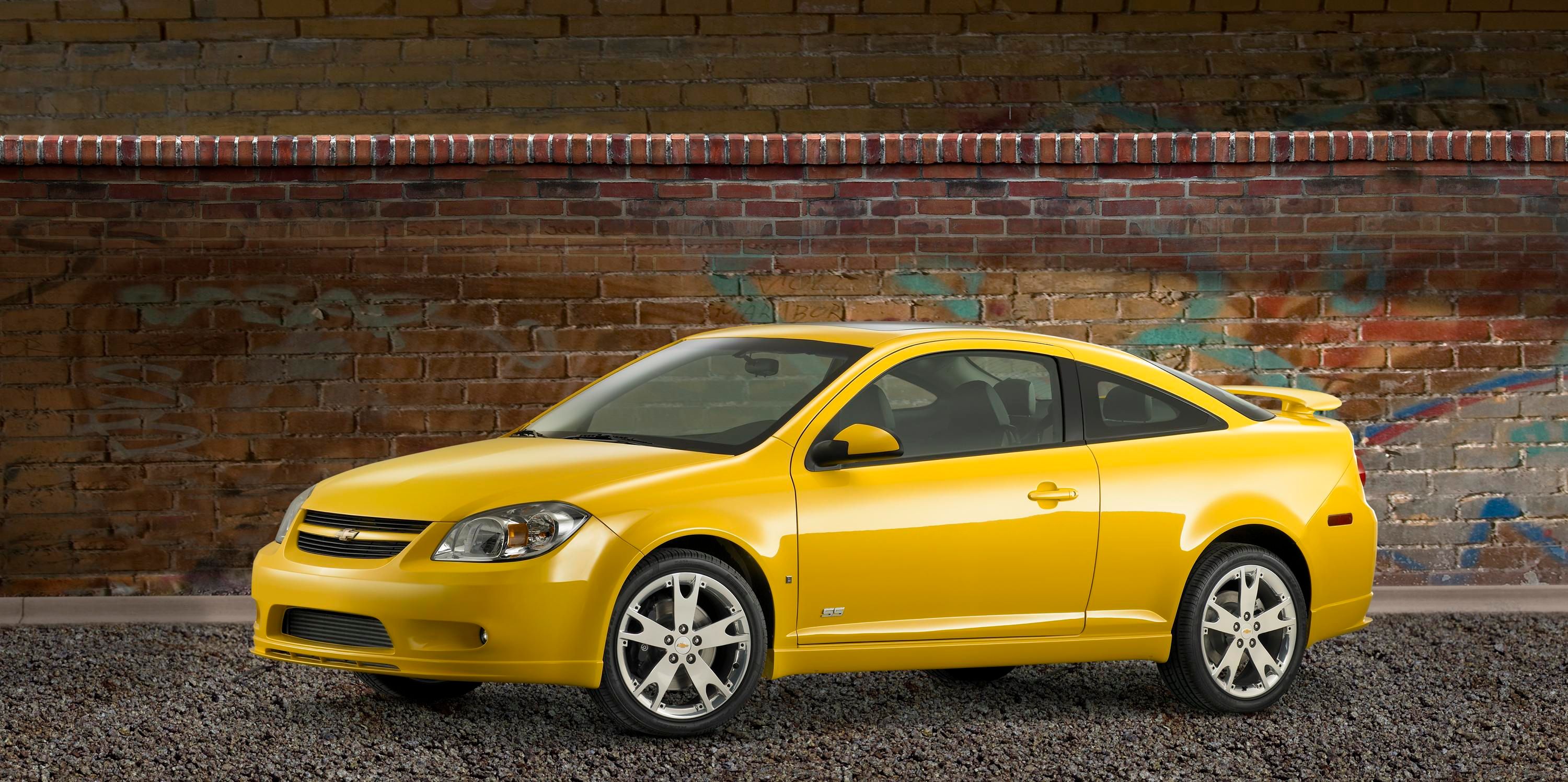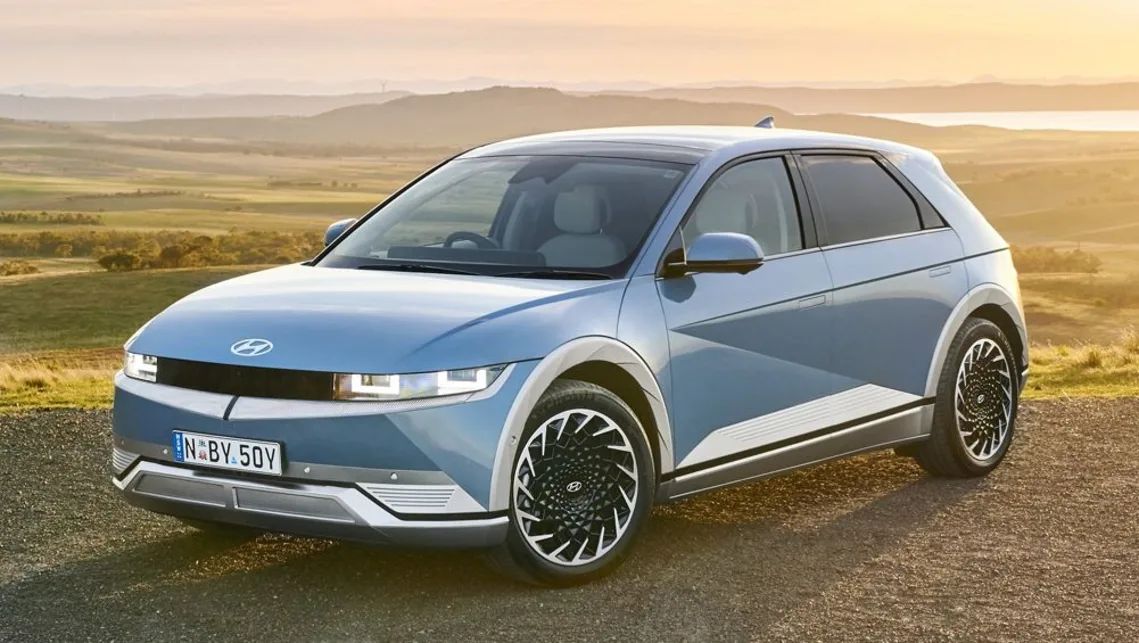
Electric vehicles (EVs) have undeniably reshaped the automotive landscape, offering a compelling blend of economic benefits, environmental advantages, and a remarkably serene driving experience. For many, the allure of lower running costs, thanks to cheaper electricity and reduced maintenance, makes the transition from traditional internal combustion engines an easy choice. Studies even highlight a less stressful driving experience, a subtle yet significant perk that speaks volumes about the refined nature of modern EVs.
Yet, for all their celebrated virtues, EVs find themselves at the center of a persistent and often misleading narrative, frequently amplified across social media platforms. A common refrain among skeptics suggests that EV batteries are inherently unreliable, prone to rapid degradation, and destined to leave owners facing exorbitant replacement costs within a few short years. This largely unfounded fear has taken root, with a recent GBK Collective study pinpointing battery replacement costs as the primary concern for prospective EV or hybrid buyers. It begs the crucial question: is this anxiety truly warranted, or are we falling prey to a common misconception?
The answer, thankfully, is far from the doomsday scenario often painted. The notion that an EV battery is as fragile as a smartphone battery, rapidly losing capacity after just months of use, is fundamentally flawed. While both largely rely on lithium-ion cells, the similarities end there. As Liz Najman, director of market insights at Recurrent Motors, an EV-focused platform, asserts, “There’s absolutely no need to be worried about a super-steep decline like what you would see in a cellphone.” This deep dive will explore why these fears are largely misplaced and highlight the manufacturers leading the charge in battery durability.
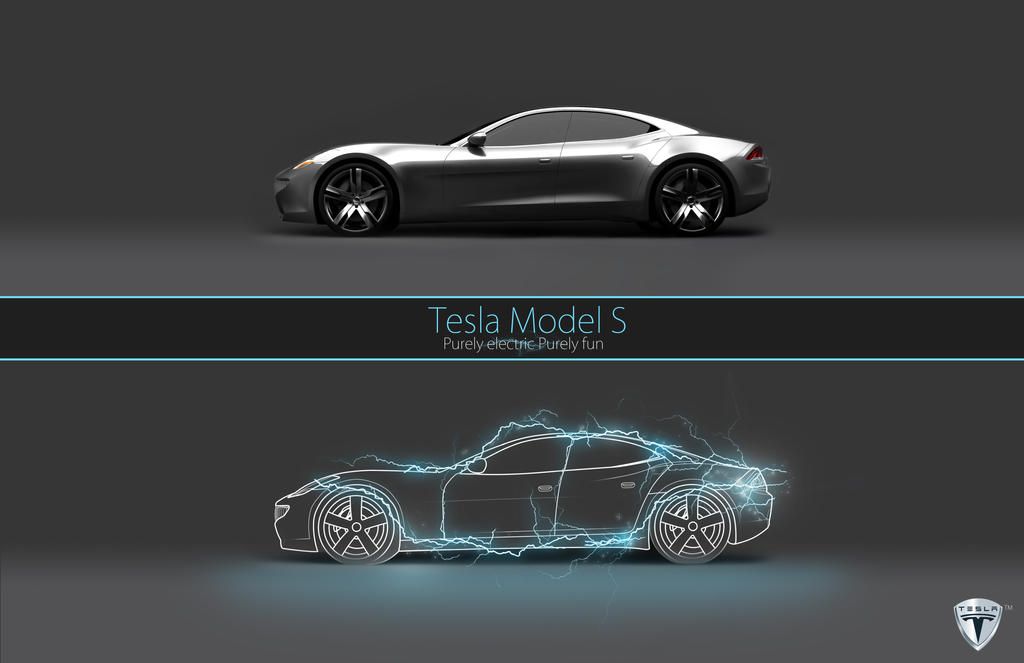
1. **Tesla**Tesla stands as a veritable benchmark in the electric vehicle industry, a reputation meticulously built upon an unwavering commitment to battery technology. From its inception, Tesla strategically poured resources into extensive battery research and forged a pivotal partnership with Panasonic to produce high-quality lithium-ion cells. This foundational work evolved into a vertical integration strategy, leading to the development of its own advanced battery manufacturing processes, including the much-anticipated 4680 cell technology.
The resulting Tesla batteries are distinguished by their exceptional energy density and robust cell design, factors that translate directly into both impressive long driving ranges and remarkably extended battery life across many years of ownership. At the heart of this longevity is Tesla’s proprietary Battery Management System (BMS), an intricate system engineered to meticulously regulate charge cycles, discharge levels, and temperature. This sophisticated approach ensures that batteries are shielded from premature degradation, firmly establishing Tesla vehicles as a preferred choice among high-mileage EV drivers.
Adding another layer of protection, Tesla vehicles are outfitted with some of the industry’s most advanced thermal management systems. These systems leverage sophisticated liquid cooling loops and precision temperature controls, ensuring that the battery pack consistently operates within its optimal temperature range, regardless of external conditions—be it the biting cold of winter or the intense heat of summer. By rigorously preventing thermal extremes, the battery cells are significantly less susceptible to accelerated aging, a common Achilles’ heel for many EVs lacking adequate thermal regulation. Even when utilizing the rapid Supercharger network, the vehicle’s software intelligently modulates the charging rate to safeguard battery health when conditions are less than ideal, showcasing Tesla’s balance between convenience and enduring battery longevity, allowing packs to last well beyond 150,000 miles with minimal capacity loss.
Tesla’s thoughtful approach extends to its range estimation and battery utilization. The company deliberately does not grant full access to the battery’s total capacity, maintaining an internal buffer. While this strategy might slightly reduce the immediately available range, it plays a crucial role in preserving a higher percentage of the battery’s original capacity over an extended period. Features such as scheduled charging, the option to limit daily charging to 80–90%, and adaptive energy management, consistently enhanced through regular over-the-air updates, are all meticulously designed not just for user convenience and peak performance but, critically, to safeguard battery longevity for years to come. Real-world data strongly supports these claims, with numerous Model S vehicles surpassing 300,000 miles on the road while exhibiting only a modest 10–15% capacity loss, a testament to Tesla’s engineering prowess. This confidence is further bolstered by generous battery warranties, typically spanning 8 years and ranging from 100,000 to 150,000 miles, providing crucial peace of mind for consumers.
Read more about: Tesla Ownership: Avoiding Costly Pitfalls That Could Drain Your Wallet and Your Patience
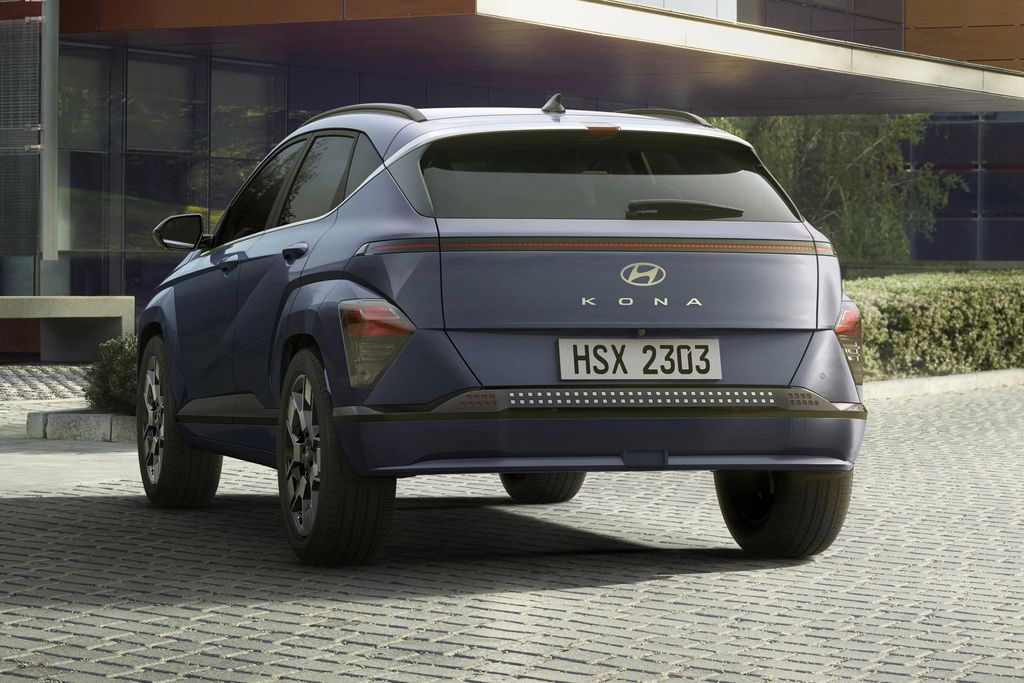
2. **Hyundai/Kia (Hyundai Ioniq & Kia EV6)**Hyundai and Kia, operating under the umbrella of Hyundai Motor Group, have rapidly ascended as formidable leaders in the EV sector, thanks to their unwavering dedication to crafting reliable and long-lasting battery technology. Their flagship electric vehicles, notably the Hyundai Ioniq series and the Kia EV6, are meticulously engineered on the innovative E-GMP (Electric Global Modular Platform). This advanced platform is purpose-built with a focus on battery efficiency, stringent thermal regulation, and enduring long-term reliability, setting a high standard for contemporary EV design.
These vehicles incorporate cutting-edge lithium-ion battery cells, seamlessly integrated with sophisticated battery management systems that are designed to maintain consistent performance even after many years of rigorous use. Hyundai and Kia have deliberately pursued a path of cautious yet impactful innovation, ensuring that their battery systems achieve a harmonious equilibrium between robust performance and sustained longevity. This strategic approach has not only garnered widespread user satisfaction but has also earned them significant respect within the highly competitive automotive industry.
One of the most instrumental elements contributing to the impressive battery longevity observed in Hyundai and Kia vehicles is their advanced thermal management infrastructure. These EVs are equipped with comprehensive liquid cooling systems, complemented by intelligent climate control integration, which collectively maintain battery temperatures within an optimal range during all operational states—whether driving, charging, or idling. This meticulous thermal regulation is particularly critical, as extreme temperatures are a notorious accelerator of lithium-ion battery degradation. Furthermore, the sophisticated charging software is designed to intelligently limit the frequency of fast-charging when it’s not essential and even adapts its behavior based on previous charging patterns to further optimize battery health. For example, if the system detects a pattern of repeated high-speed charging, it may automatically adjust the charge rate to mitigate potential long-term damage.
Reinforcing their commitment to durability, Hyundai and Kia provide industry-leading warranties, frequently offering 8 to 10 years or 100,000 miles on their EV batteries. This remarkably generous warranty is far more than a mere marketing tactic; it stands as a clear testament to the companies’ profound confidence in their advanced battery technology and stringent manufacturing quality. In real-world scenarios, a significant number of owners of the original Hyundai Ioniq Electric have reported minimal capacity degradation, often less than 10%, even after accumulating over 150,000 kilometers of driving. Newer models such as the Ioniq 5 and Kia EV6, boasting even more efficient powertrains and enhanced cooling technology, are anticipated to deliver even superior long-term performance. This steadfast reliability is particularly valuable for consumers in regions with developing EV infrastructure, where the logistical challenges and costs associated with battery replacement would be substantial.
Car Model Information: 2023 Hyundai IONIQ 5 SEL
Name: Hyundai Ioniq
ModelCode: AE
Manufacturer: Hyundai Motor Company
Production: 2016ndash2022
Class: Compact car
BodyStyle: liftback
Layout: Front-engine, front-wheel-drive layout
Length: cvt
Wheelbase: cvt
Height: cvt
Width: cvt
Assembly: Ulsan
ModelYears: 2017ndash2022
Successor: Hyundai Elantra#Seventh generation (CN7; 2020)
Categories: 2010s cars, All articles containing potentially dated statements, All articles with specifically marked weasel-worded phrases, All articles with unsourced statements, Articles containing Korean-language text
Summary: The Hyundai Ioniq (Korean: 현대 아이오닉) is a compact five-door liftback manufactured and marketed by Hyundai. The nameplate Ioniq is a portmanteau of ion and unique. It is marketed as the first Hyundai automobile to be offered without a standard internal combustion engine, but rather sold in hybrid, plug-in hybrid, and all-electric variants.
The Ioniq Hybrid debuted in South Korea in January 2016, with all three variants debuting at 2016 Geneva and New York auto shows. The hybrid variant launched in its home market in February 2016, followed by the electric model in July 2016. The plug-in hybrid version followed in February 2017.
From its first model year (2017) through the 2019 model year, the Ioniq Electric had been the EPA’s most efficient vehicle with a rated fuel economy of 136 miles per gallon gasoline equivalent (24.8 kWh/100 mi; 15.4 kWh/100 km). The Ioniq Blue Hybrid version has been rated at 4.1 L/100 km (58 mpg‑US), making it the most fuel-efficient hybrid vehicle to be mass-produced.
Following its discontinuation in South Korea in 2021, production of the Ioniq ended in July 2022 in favour of battery electric lineup of Ioniq-badged models starting from the Ioniq 5 hatchback, Ioniq 6 sedan, and the Ioniq 9 SUV.
Get more information about: Hyundai Ioniq
Buying a high-performing used car >>>
Brand: Hyundai Model: Ioniq
Price: $27,293 Mileage: 26,064 mi.
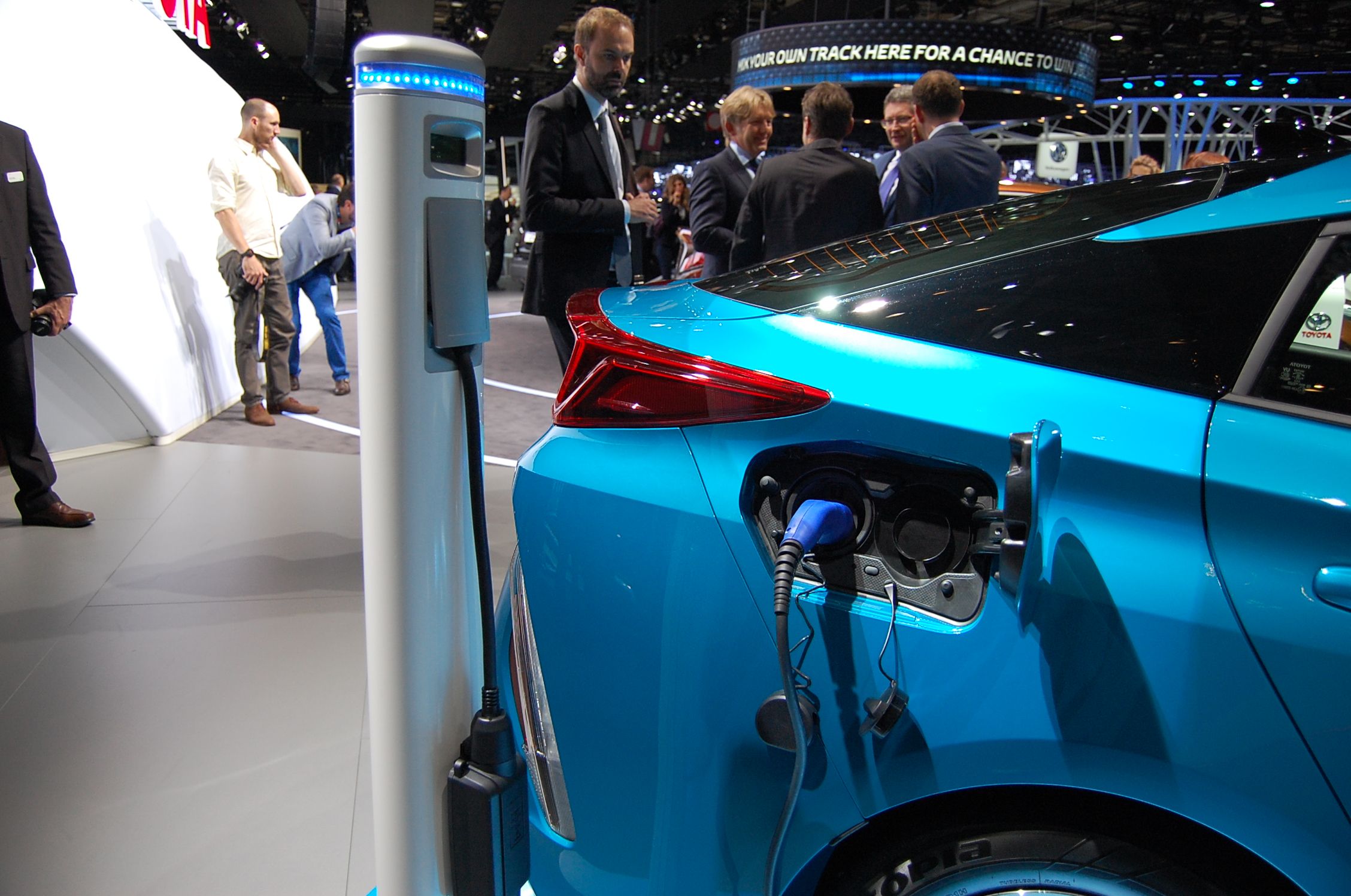
3. **Toyota (bZ4X and Prius Prime Plug-In Hybrid)**Toyota has long been recognized as a trailblazer in hybrid technology, an extensive history that has cultivated a profound understanding of battery longevity. While its full transition to purely battery-electric vehicles (BEVs) has been more measured compared to some rivals, Toyota’s established hybrid systems—exemplified by the iconic Prius and the plug-in hybrid Prius Prime—have consistently demonstrated exceptional durability over several decades. With more than 20 years of accumulated data and millions of hybrid vehicles sold worldwide, Toyota has meticulously refined its battery management techniques, consistently prioritizing long-term performance, even if it occasionally means a trade-off in raw performance metrics like rapid acceleration or ultra-fast charging capabilities.
The bZ4X, Toyota’s latest full-electric offering, is a direct beneficiary of this wealth of experience, inheriting many of these time-tested protective battery strategies. These include conservative state-of-charge buffers, which prevent the battery from ever being fully charged or completely depleted, and rigorous thermal regulation systems. Toyota’s overarching battery philosophy is deeply anchored in reliability, favoring consistent, enduring performance over speculative risks. The Prius, for instance, is designed to maintain its battery charge within an optimal range, typically between 40% and 80%, a strategy that critically avoids the stresses of full charging or discharging. This proven approach is now seamlessly integrated into Toyota’s burgeoning lineup of new electric vehicles.
The bZ4X continues this legacy of careful battery stewardship, incorporating a relatively modest charging curve that deliberately steers clear of the aggressive fast-charging abuse seen in some competitors, thereby safeguarding battery integrity over the long term. While this measured approach might slightly temper ultimate charging speeds or maximum range figures, its profound benefit lies in significantly reducing the long-term wear and tear on the delicate battery cells. Toyota also employs a combination of passive and active cooling techniques across both its plug-in hybrids and dedicated BEVs, ensuring that battery temperatures remain consistently stable. This meticulous thermal control is especially vital for preserving the chemical balance within the battery and minimizing thermal stress, both critical for extended lifespan.
Toyota further distinguishes itself through its methodical testing and extensive real-world validation processes before ever launching new battery technologies. Unlike some brands that might rush products to market, Toyota adopts a cautiously deliberate approach, subjecting battery chemistries to rigorous, long-term testing under a diverse array of conditions before granting commercial approval. This “slow-but-sure” strategy demonstrably leads to fewer recalls, fosters greater satisfaction among long-term owners, and ensures more robust performance over time. Moreover, Toyota has a well-earned reputation for consistently underpromising and overdelivering. Many long-time hybrid Prius owners attest that their batteries continue to function exceptionally well, often far beyond the official warranty period, with minimal to no discernible drop in capacity. Early indicators from the bZ4X suggest a strong continuation of this impressive trend within their expanding BEV lineup. For many consumers, particularly those in rural areas or regions with extreme climates, battery reliability and longevity are paramount, outweighing sheer acceleration or ultra-fast charging capabilities. Toyota’s unwavering commitment to durability is evident not only in the sophisticated hardware of their vehicles but also in their intelligent software, prudent charging logic, and comprehensive long-term serviceability. For those seeking an EV that may not dominate performance charts but is highly likely to remain a dependable workhorse a decade down the line, Toyota’s evolving electric offerings warrant serious consideration.
Car Model Information: 2021 RAM 1500 Big Horn/Lone Star
Name: Toyota Prius Plug-in Hybrid
Manufacturer: Toyota
Aka: Toyota Prius Prime (2016–2024)
Production: January 2012 – present
ModelYears: 2012–present
Class: Compact car
BodyStyle: liftback
Layout: Front-engine, front-wheel-drive
Categories: All Wikipedia articles in need of updating, All articles containing potentially dated statements, All articles that are excessively detailed, All articles with dead external links, All articles with style issues
Summary: The Toyota Prius Plug-in Hybrid (often abbreviated as the Prius PHV and known as the Prius Prime in North America, South Korea, and New Zealand from 2016 to 2024) is a plug-in hybrid liftback manufactured by Toyota. The first-generation model was produced from 2012 to 2016. The second-generation model has been produced since 2016. Production of the third-generation model began in 2023.
The Prius Plug-in Hybrid was the second most sold plug-in electric car in 2012, and became third-best all-time in December 2014. As sales declined after the end of its production, the Prius PHV fell to fifth place in the global ranking by November 2015, after being surpassed by both the Tesla Model S and the Mitsubishi Outlander PHEV. As of December 2017, sales were led by North America with 66,800 units, followed by Japan with 48,800, and the European market with 13,100 units. The U.S. was the leading country market with 65,703 units sold by 2017. As of December 2019, cumulative global sales of both Prius plug-in generations totaled 209,000 units.
Get more information about: Toyota Prius Plug-in Hybrid
Buying a high-performing used car >>>
Brand: Toyota Model: Prius Prime
Price: $29,995 Mileage: 74,908 mi.
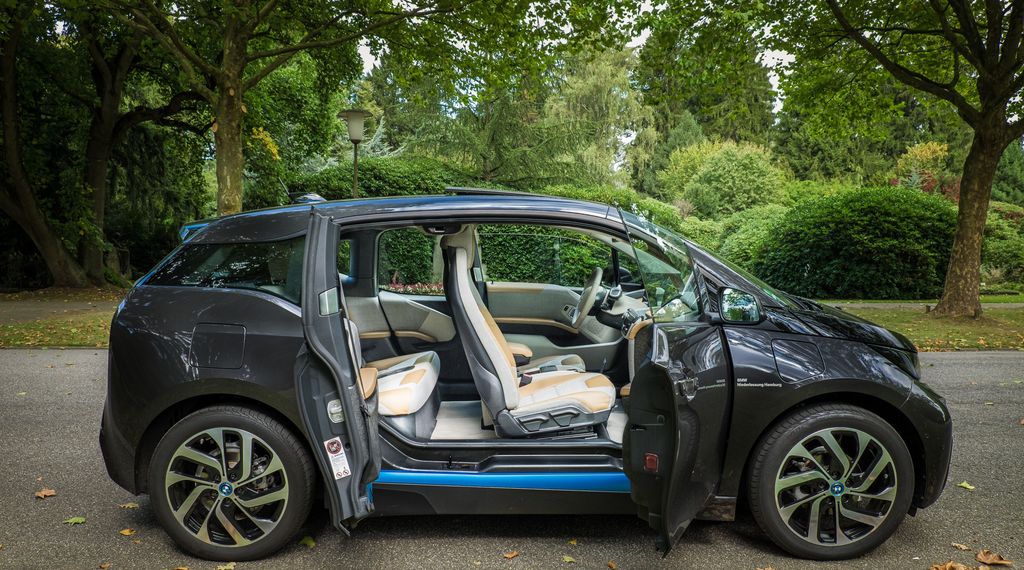
4. **BMW (i3, i4, and iX series)**BMW’s initial venture into the electric vehicle market, beginning with the distinctive i3, was characterized by a cautious yet profoundly strategic approach, laying essential groundwork for robust battery durability through meticulous engineering and sophisticated software optimization. Despite its avant-garde aesthetics, the i3 quickly garnered acclaim for its impressive reliability and exceptional battery longevity. BMW masterfully integrated the invaluable lessons gleaned from the i3 into its subsequent, more mainstream electric offerings, such such as the i4 and iX series. Both of these newer models now exemplify a mature and refined approach to electric powertrain and battery integration, pushing the boundaries of what consumers expect from a premium EV.
These vehicles are constructed with a strong emphasis on achieving superior energy efficiency, precise regenerative braking control, and incorporating modular battery pack designs that are inherently capable of gracefully managing both heat dissipation and the natural aging process. BMW strategically sources premium-grade battery cells from leading manufacturers like CATL and Samsung SDI, seamlessly integrating them with its proprietary Battery Management System (BMS). This advanced BMS is engineered with a dual purpose: to optimize both driving range and performance while, critically, extending the overall health and lifespan of the battery cells over the long haul. Intelligent charging algorithms, coupled with adaptive regenerative braking that dynamically adjusts based on individual driving behavior, collectively work to significantly reduce unnecessary strain on the battery. In essence, the vehicle possesses an embedded intelligence, “learning” how to proactively protect its own battery over time—a feature frequently lauded by discerning BMW owners.
Furthermore, the meticulous inclusion of advanced cooling systems featuring multiple thermal zones ensures that the battery pack remains consistently and evenly cooled throughout its operation. This comprehensive thermal management is crucial in preventing localized hotspots that can otherwise accelerate wear and diminish battery performance. BMW also consciously implements strategies to ensure its batteries are neither overused nor overexerted. Akin to the approaches taken by Tesla and Toyota, BMW vehicles typically maintain a strategic buffer of unused capacity at both the upper and lower limits of the battery’s charge spectrum. This means that under normal operating conditions, the battery cells are never subjected to the full stress of being completely charged or fully discharged. This deliberate limitation significantly extends the usable lifespan of the battery. While this careful approach may result in a slight, nominal reduction in the immediately available range, it fundamentally ensures that the battery consistently operates within a safe, stable, and chemically optimal state, thereby maximizing its long-term durability.
The real-world performance of BMW’s EV batteries underscores the success of these protective strategies. Many i3 owners, some of whom have accumulated well over 150,000 miles, consistently report only moderate levels of degradation, a testament to the robust engineering and intelligent management systems. What further distinguishes BMW is its exemplary customer support and clearly articulated battery warranty terms. The majority of their EVs are backed by comprehensive 8-year/100,000-mile warranties. Beyond this, BMW has demonstrated commendable transparency in how it addresses battery-related issues, even after the warranty period. Their certified pre-owned EV program includes thorough battery inspections and guarantees, positioning BMW as one of the few luxury brands that places such consistent emphasis on battery longevity, both from a technical design perspective and a holistic customer experience standpoint. For discerning buyers seeking premium electric vehicles that harmoniously blend high performance with proven real-world durability, BMW unequivocally remains a compelling and highly trustworthy option in the evolving EV landscape.
Car Model Information: 2019 BMW i3 120Ah
Name: BMW i3
Manufacturer: BMW
ModelCode: I01
Production: September 2013 – August 2022 (250,000 units)
Assembly: Leipzig
Successor: BMW iX,BMW iX1,BMW i4
Class: Supermini
BodyStyle: hatchback
Doors: Suicide doors
Layout: Rear-motor, rear-wheel-drive
Chassis: Body-on-frame
Motor: BMW eDrive synchronous permanent magnet motor 125 kW
137 kW
Battery: kWh
ElectricRange: ampere hour,Convert,United States Environmental Protection Agency,Range extender (vehicle)
Engine: Straight-twin engine,range extender,9 L
Abbr: on
Transmission: Single speed with fixed ratio
Drivetrain: Series hybrid,plug-in hybrid,Range extender
Charging: Combo Coupler
Wheelbase: 2570 mm
Length: 3999 mm
Width: 1775 mm
Height: 1578 mm
Weight: 1195 kg
Sp: uk
Designer: Richard Kim (car designer)
ModelYears: 2014–2021 (North America)
Categories: All articles containing potentially dated statements, All articles with dead external links, Articles containing potentially dated statements from December 2019, Articles containing potentially dated statements from December 2021, Articles containing potentially dated statements from February 2014
Summary: The BMW i3 is an electric car that was manufactured by German marque BMW from 2013 to 2022. The i3 was BMW’s first mass-produced zero emissions vehicle and was launched as part of BMW’s electric vehicle BMW i sub-brand. It is a B-segment, high-roof hatchback with an electric powertrain. It uses rear-wheel drive via a single-speed transmission and an underfloor lithium-ion battery pack with an optional range-extending petrol engine.
Styled by Richard Kim, the i3 is a five-door with a passenger module of high strength, ultra-lightweight carbon fibre reinforced polymer adhered to an aluminium chassis, battery, drive system and powertrain. The body features two clamshell rear-hinged rear doors.
The i3 debuted as a concept at the 2011 International Motor Show Germany, and production began in September 2013 in Leipzig.
It ranked third amongst electric cars sold worldwide from 2014 to 2016. Its global sales totaled 250,000 units by the end of 2022. Germany was its biggest market with over 47,500 units delivered through December 2021, followed by the U.S. with over 45,000.
The i3 won two World Car of the Year Awards, selected as 2014 World Green Car of the Year and as 2014 World Car Design of the Year. The i3 received an iF Product Design Gold Award, and won UK Car of the Year 2014 and Best Supermini of 2014 in the first UK Car of the Year Awards.
Get more information about: BMW i3
Buying a high-performing used car >>>
Brand: BMW Model: i3
Price: $16,297 Mileage: 27,144 mi.
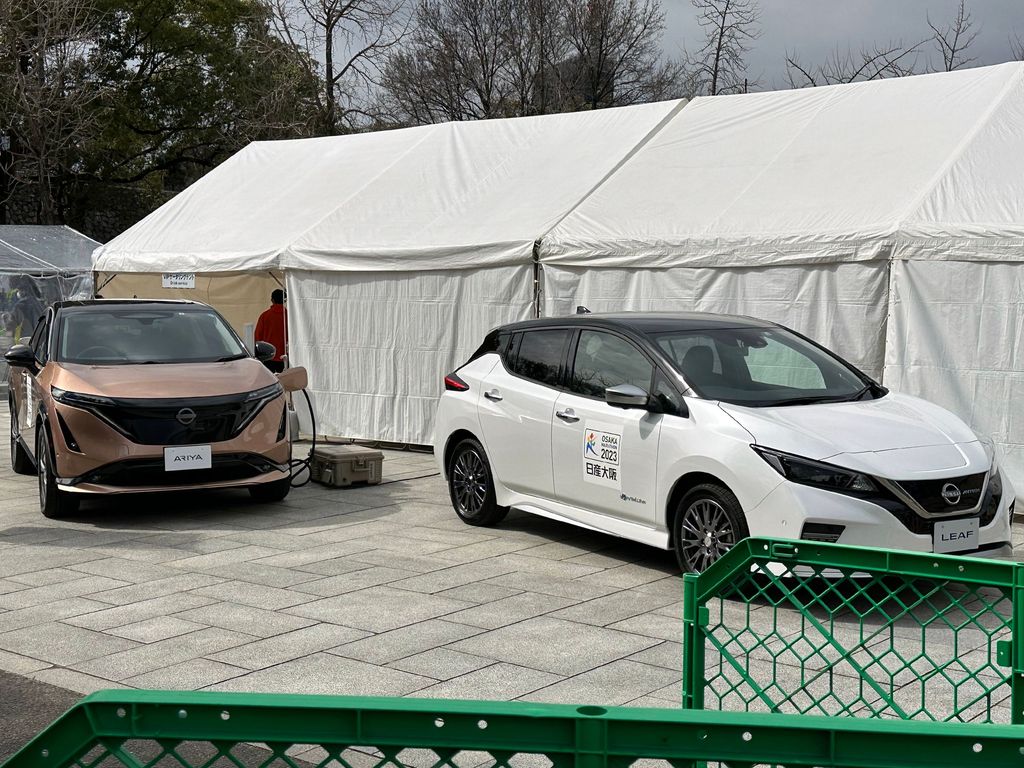
5. **Nissan (Leaf and Ariya)**Nissan holds a significant place in electric vehicle history as one of the earliest major automakers to embrace mass-produced EVs, having launched the groundbreaking Nissan Leaf all the way back in 2010. For nearly a decade, the Leaf stood as one of the world’s best-selling electric vehicles, generating an unparalleled wealth of real-world data on battery performance and long-term durability. While initial models of the Leaf faced some criticism for lacking active thermal management—which led to notable battery degradation issues, particularly in extremely hot climates—subsequent iterations of the vehicle have showcased substantial improvements in this critical area. The much-anticipated introduction of the Nissan Ariya further signifies a new and sophisticated era of battery care within Nissan’s evolving EV lineup, building on years of experience and refinement.
Despite the early shortcomings, Nissan has undeniably demonstrated over time that, with judicious design choices and informed user awareness, EV batteries can indeed remain highly functional and dependably robust across many years of ownership. The impressive longevity of Nissan EV batteries, particularly when operating in temperate climates, is often attributed to a combination of conservative energy management protocols and a carefully chosen battery chemistry that prioritizes durability over sheer, unadulterated raw performance. For instance, Nissan consistently opted for air-cooled battery packs in the Leaf. While this approach is not as inherently effective as liquid cooling in extreme conditions, it was designed to keep production costs down and maintain system simplicity.
Critically, while this air-cooling strategy undeniably contributed to accelerated degradation in intensely hot environments, such as parts of Arizona or Australia, a vast number of Leaf vehicles in cooler regions have consistently demonstrated exceptional battery longevity. It is not uncommon for a well-maintained Leaf in a mild climate to comfortably surpass 150,000 to 200,000 miles on its original battery, typically experiencing only moderate capacity loss, often remaining well under 20%. Furthermore, Nissan rarely pushed the envelope on aggressively fast-charging speeds in its earlier models. While this was perceived as a drawback by some consumers seeking quicker top-ups, it inadvertently played a crucial role in preserving battery integrity and extending its lifespan over time, reducing thermal stress on the cells.
The advent of the Nissan Ariya marks a significant technological leap for the company, as it ushers in more advanced battery management systems. These include the long-awaited integration of liquid cooling and sophisticated active thermal regulation, effectively addressing the primary concern associated with its earlier EV models. The Ariya utilizes high-density battery packs featuring modern lithium-ion chemistries, and Nissan has incorporated a more intelligent Battery Management System (BMS) that adeptly balances charge rates, diligently monitors individual cell performance, and actively adjusts cooling parameters in real-time. While the fast-charging capabilities of the Ariya are now far more competitive, Nissan continues to prioritize controlled, safe energy input—a protective measure purposefully aimed at maximizing long-term battery health and ensuring consistent reliability for owners.
What makes Nissan particularly noteworthy is its consistent dual focus on affordability coupled with unwavering durability. The Leaf, even in its capacity as a budget-friendly EV, has conclusively proven that with thoughtful usage and battery-aware driving habits, an electric vehicle can reliably serve as a dependable, long-term transportation solution for a wide range of consumers. Nissan also provides comprehensive battery warranties, typically covering 8 years or 100,000 miles, and has maintained a commendable level of transparency in how it addresses capacity degradation under these warranty terms. In recent years, the company has even initiated battery refurbishment and replacement programs in select markets, further underlining its commitment to customer satisfaction and extending vehicle lifespan. While Nissan may not always receive the same level of industry acclaim as some of its luxury counterparts like Tesla or BMW, it has quietly, yet consistently, built a robust legacy of battery resilience that continues to evolve and strengthen with each new model. For budget-conscious EV buyers who unequivocally value long-term reliability and practical endurance over transient performance hype, Nissan remains a brand that is undoubtedly well worth serious consideration.
The previous section meticulously debunked widespread myths about EV battery degradation and celebrated the engineering triumphs of brands that prioritize longevity, showcasing how some electric vehicles can reliably run for hundreds of thousands of miles. However, the electric vehicle narrative isn’t without its complexities, and not all EV batteries achieve the same remarkable durability. While some manufacturers excel, others have regrettably faced significant challenges, leading to more frequent battery replacements and an erosion of consumer confidence. This section will now explore the less successful side of the coin, examining five specific EV models associated with more frequent battery issues. We will scrutinize the factors contributing to these shortcomings, including design flaws, inadequate thermal management, and their consequential impact on consumer trust and long-term vehicle value. Understanding these examples is crucial for a complete picture of the evolving EV landscape.
Car Model Information: 2014 Nissan Frontier S
Name: Nissan Leaf
Caption: A second generation Nissan Leaf
Manufacturer: Nissan
Production: October 2010 – present
ModelYears: 2011–present
Class: Unbulleted list
BodyStyle: Unbulleted list
Layout: Front-engine, front-wheel-drive layout
Predecessor: Unbulleted list
Categories: 2020s cars, All articles containing potentially dated statements, All articles with dead external links, Articles containing Japanese-language text, Articles containing potentially dated statements from December 2015
Summary: The Nissan Leaf (Japanese: 日産・リーフ, Hepburn: Nissan Rīfu; stylized as LEAF) is a battery-electric car manufactured by Nissan, produced since 2010. It was offered exclusively as a 5-door hatchback until 2025, which since then has become a crossover SUV model. The term “LEAF” serves as a backronym to leading environmentally-friendly affordable family car.
The Leaf was unveiled on 1 August 2009 as the world’s first mass market electric and zero-emission vehicle. Among other awards and recognition, it received the 2010 Green Car Vision Award, the 2011 European Car of the Year, the 2011 World Car of the Year, and the 2011–2012 Car of the Year Japan. The Leaf’s range on a full charge has been steadily increased from 117 km (73 miles) to 364 km (226 miles) (EPA rated) by the use of larger battery packs and several minor improvements.
As of September 2021, European sales totalled more than 208,000, and as of December 2021, over 165,000 had been sold in the U.S., and 157,000 in Japan. Global sales across both generations totalled 577,000 by February 2022. The Leaf was the world’s all-time top selling plug-in electric car until it was surpassed in early 2020 by the Tesla Model 3.
Get more information about: Nissan Leaf
Buying a high-performing used car >>>
Brand: Nissan Model: Leaf
Price: $13,435 Mileage: 131,197 mi.
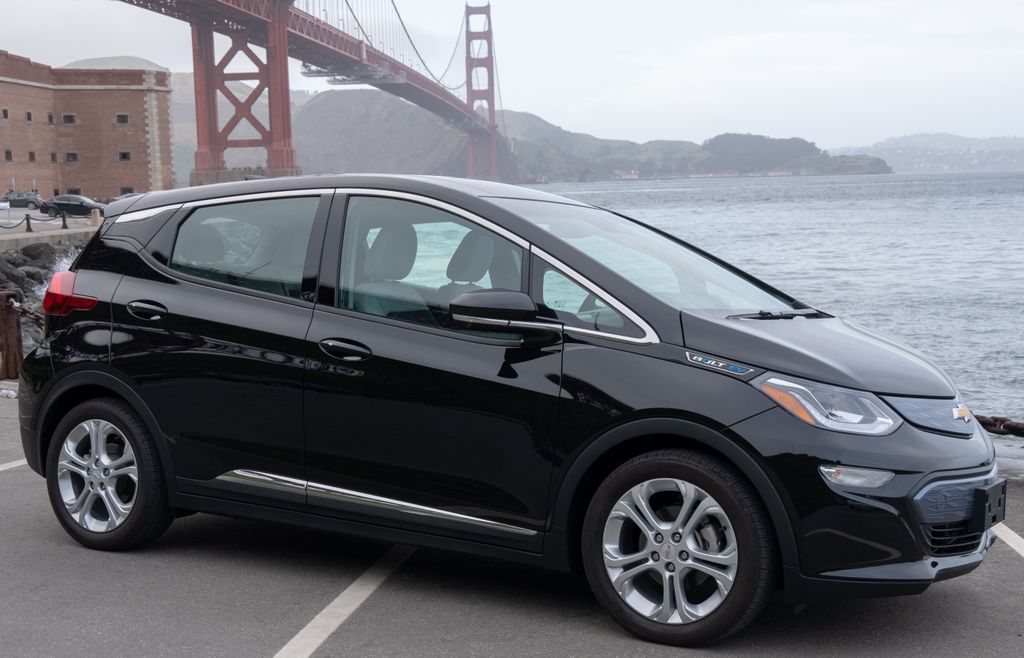
6. **Chevrolet (Chevy Bolt EV and EUV)**The Chevrolet Bolt EV began as a promising entry in the affordable EV market but quickly became infamous for severe battery issues. While initial reviews praised its range and practicality, widespread reports of battery fires and subsequent recalls significantly damaged its reputation. The problems were traced to manufacturing defects in LG Chem battery cells, where flaws could cause short circuits, leading to thermal runaway and fires.
General Motors issued an unprecedented recall affecting nearly every Bolt, advising owners to limit charging and park outside. This left thousands of drivers with limited confidence and operational restrictions. Even after warranty replacements, some owners reported ongoing degradation and performance inconsistencies, highlighting concerns about manufacturing standards and the long-term reliability of replacement packs.
Compounding these issues, the Bolt’s battery management system (BMS) was relatively basic, lacking advanced predictive diagnostics and sophisticated thermal regulation. Early iterations also lacked liquid cooling, making the battery pack vulnerable to overheating during high-stress driving or fast charging. This accelerated degradation and contributed to premature replacements, often well before expected lifespan. The extended wait times for replacement batteries further compounded owner frustration, impacting the vehicle’s long-term value and consumer trust.
Car Model Information: 2025 Genesis GV80 2.5T
Name: Chevrolet Bolt EUV
Motor: 200 hp
Abbr: out (EPA method)
Weight: 3679 lb
Height: 63.6 in
Width: 69.7 in
Length: 169.5 in
Wheelbase: 105.3 in
Charging: Alternating current
ElectricRange: 247 miles
Battery: unbulleted list
Transmission: 1-speed Electronic Precision Shift
Related: unbulleted list
Platform: GM BEV2 platform
Layout: Front-engine, front-wheel-drive layout
BodyStyle: SUV
Class: Subcompact crossover SUV
Assembly: unbulleted list
ModelYears: unbulleted list
Production: May 2021 – November 2023
Manufacturer: General Motors
Categories: All Wikipedia articles written in American English, Articles with short description, CS1 Mexican Spanish-language sources (es-mx), Cars introduced in 2021, Chevrolet vehicles
Summary: The Chevrolet Bolt EUV (short for “electric utility vehicle”) is a battery electric subcompact crossover SUV manufactured by General Motors under the Chevrolet brand, presented on February 14, 2021.
As a larger version of the similarly named Chevrolet Bolt EV, the EUV shares its BEV2 platform and powertrain.
Get more information about: Chevrolet Bolt EUV
Buying a high-performing used car >>>
Brand: Chevrolet Model: Bolt EV and EUV
Price: $54,951 Mileage: 19,781 mi.
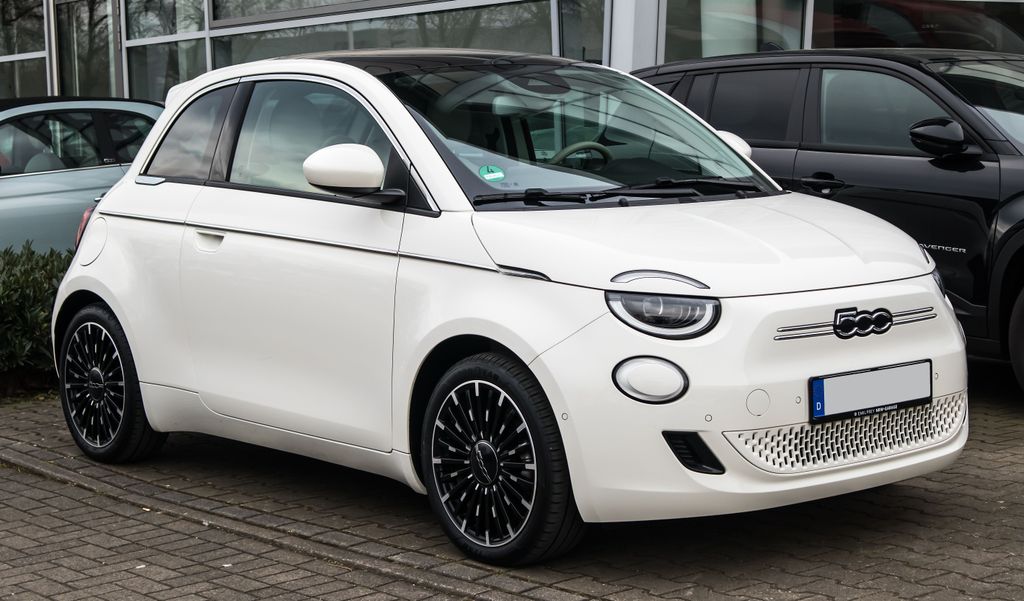
7. **Fiat (500e)**Fiat’s electric vehicle, the 500e, was primarily conceived as a “compliance car” for regulatory requirements, particularly in California, rather than an innovative long-range EV. This intent influenced its engineering priorities; the battery design, thermal management, and energy management systems were basic and underdeveloped compared to more robust offerings, leading to premature battery wear and frequent replacements.
A major contributor to degradation was the 500e’s limited thermal management system. It lacked advanced liquid cooling, relying on passive or minimal control, which made the battery vulnerable in hot climates or under aggressive driving and charging. Without proper cooling, cells overheated during operation, accelerating chemical breakdown.
This design flaw resulted in many 500e owners noticing steep range reductions and sluggish performance within the first few years. Given its modest battery capacity, even a 10% loss significantly reduced practical driving range, impacting daily usability. This rapid degradation, coupled with the absence of intelligent buffer zones, meant the 500e offered little margin for natural degradation, making its battery performance highly susceptible to early and impactful decline and leading to increased range anxiety.
Car Model Information: 2024 FIAT 500e Base
Name: Fiat 500e (New 500)
Manufacturer: Fiat
ModelCode: 332
Production: February 2020–present
ModelYears: 2020–present
Assembly: Fiat Mirafiori,Turin
Designer: Lorenzo Battisti, Dario Pellegrino at Centro Stile Fiat
Class: City car
BodyStyle: hatchback,cabriolet,4-door hatchback
Platform: STLA Small
Motor: GKN Automotive G400 IPMS interior permanent-magnet synchronous motor
Battery: Lithium-ion battery
Powerout: {{cvt,70,kW,PS hp,0
ElectricRange: {{cvt,185,km,0,Worldwide harmonized Light vehicles Test Procedure
Charging: DC:,50nbspkW (24nbspkWh battery),85nbspkW (42nbspkWh battery),400nbspV 3-Phase AC: 11nbspkW,230nbspV AC: 6.6nbspkW,120nbspV AC: 3.3nbspkW
Wheelbase: cvt
Length: cvt
Width: cvt
Height: cvt
Weight: cvt
Predecessor: Fiat 500e (2013)
Sp: uk
Categories: 2020s cars, All articles with bare URLs for citations, Articles with bare URLs for citations from August 2025, Articles with short description, CS1 French-language sources (fr)
Summary: The Fiat 500e (project 332), also known as the 500 elettrica or New 500 is a hybrid or battery-electric car by Italian manufacturer Fiat as the third generation of its 500 city cars, following the original 500 (1957–1975) and second-generation 500 (2007–2024). The third-generation 500e is manufactured at the Mirafiori plant in Turin, Italy, starting in 2020, and was sold alongside the second-generation 500, which was manufactured in Tychy, Poland until 2024. It was scheduled to be launched at the Geneva Motor Show but that event was canceled due to the COVID-19 pandemic; it was launched on 4 March 2020 in Milan.
The 500e has a 320 km (199 mi) range on the European WLTP combined test cycle, and achieves 400 km (249 mi) on that test’s urban cycle, which is generally favourable toward electric vehicles (EVs). Most versions of the car are powered by an 87 kW (117 hp) electric traction motor, fed by a 42 kWh lithium-ion battery pack.
Get more information about: Fiat 500e
Buying a high-performing used car >>>
Brand: Fiat Model: 500e
Price: $24,915 Mileage: 3,207 mi.
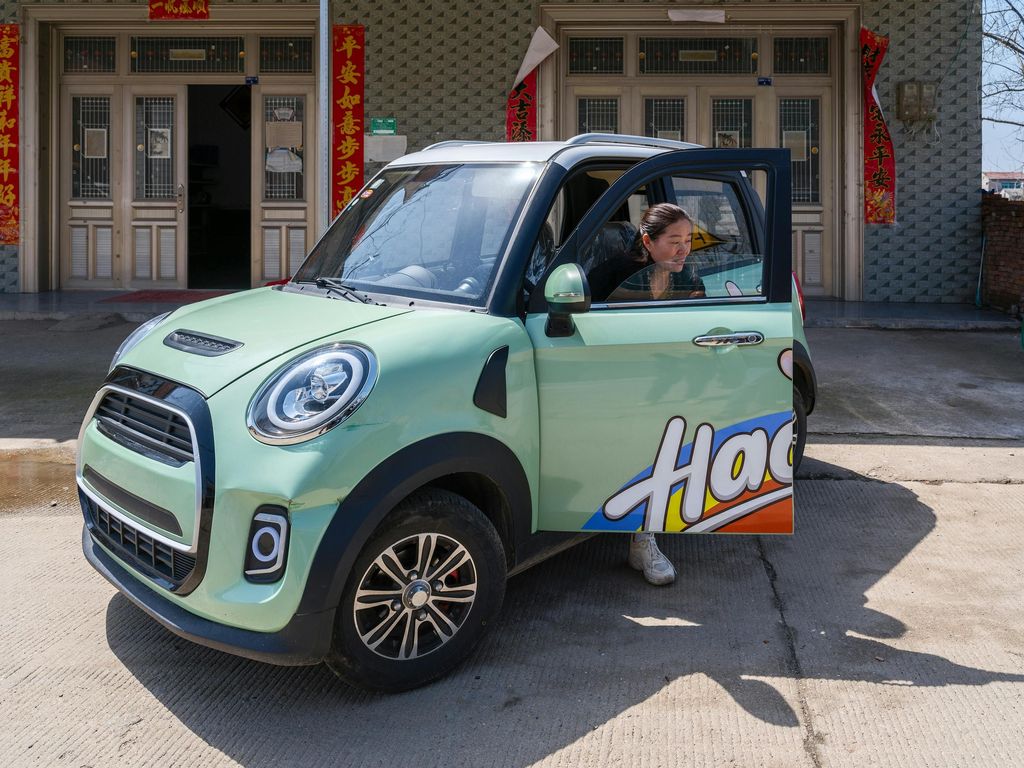
8. **Mini (Mini Electric / Mini Cooper SE)**The Mini Electric (Mini Cooper SE) offered charming design and agile handling, but its electric powertrain adopted an approach that often left its battery system susceptible to accelerated degradation. The design prioritized compact packaging and a lower price, unfortunately compromising on a truly robust battery thermal management strategy, contributing to more frequent battery health concerns.
A key challenge stems from its simplified thermal management system, primarily air-cooling. While effective in mild climates and light use, air cooling struggles significantly in hotter environments or during sustained, demanding driving and frequent fast-charging. These conditions cause battery cells to overheat, accelerating chemical aging and capacity loss compared to liquid-cooled models.
The impact manifests as a noticeable decline in range and performance, especially as the vehicle ages or if operated in challenging conditions. With its already modest battery capacity, significant degradation quickly becomes pronounced, affecting usability. For owners, this accelerated wear, combined with the brand’s premium positioning, can lead to dissatisfaction and concerns about long-term resale value due to potential costly battery replacements post-warranty.
Car Model Information: 2023 Alfa Romeo Stelvio Veloce AWD
Name: Mini
Caption: 2024 Mini Cooper S (F66)
Alt: A 2024 Mini Cooper S with 3-door body style
Manufacturer: BMW
Aka: ubl
Production: 2001–present
ModelYears: 2002–present
Layout: Front-engine, front-wheel-drive layout
Class: Supermini
Predecessor: Mini,Austin Metro
Categories: 2010s cars, All articles to be expanded, Articles to be expanded from June 2025, Articles with short description, CS1: long volume value
Summary: The Mini (stylised as MINI) supermini range, marketed under various names such as Mini Cooper, Mini Hatch, Mini Hardtop, Mini One, and Mini John Cooper Works, are a family of retro-styled three-door hatchback, two-door convertible, and five-door hatchback (since 2014). The range was introduced in July 2001, following the acquisition of the Mini brand by German automaker BMW.
BMW first unveiled the Mini hatch concept car at the 1997 Frankfurt International Motor Show, when the Mini brand was still part of the BMW-owned Rover Group. Developed as a successor to the original Mini, the styling of the concept car was well received by the public and further developed. The new Mini range was launched by BMW in 2001, one year after their sale of the Rover Group in March 2000, and the classic Mini’s discontinuation that same year. Under BMW ownership, the brand later grew its line-up by adding larger models such as the Clubman in 2007, the Countryman in 2010, the Paceman in 2012, and the Aceman in 2024.
The second generation was launched in 2006 and the third, adding a longer 4/5-door hatchback, in 2014. A two-door convertible version was added in 2004, followed by its second generation in 2008. With the launch of the fourth generation in 2024, the Mini Hatch has been renamed to Mini Cooper. BMW also developed several battery electric versions of the Mini, starting with the Mini E in 2009 developed only for field trials, followed by the mass-produced Mini Electric in 2019, and succeeded by the Mini Cooper E/SE in 2023 which uses a dedicated electric vehicle platform.
Mini models under BMW ownership are produced in Cowley, Oxfordshire, United Kingdom at Plant Oxford. Between July 2014 and February 2024, F56 3-door production was shared with VDL Nedcar in Born, Netherlands. The F57 convertible was exclusively assembled at the Born plant between 2015 and 2024. From 2024, all F65/66/67 combustion engined Mini hatch and convertible production will be centred at Oxford. Since late 2023, the electric Mini Cooper is developed and produced in China at the Spotlight Automotive joint venture facility in Zhangjiagang, Jiangsu.
Get more information about: Mini Hatch
Buying a high-performing used car >>>
Brand: Mini Model: Mini Electric
Price: $32,281 Mileage: 30,239 mi.
Read more about: U.S. News Ranks the 16 Best Electric and Hybrid Vehicles for 2023
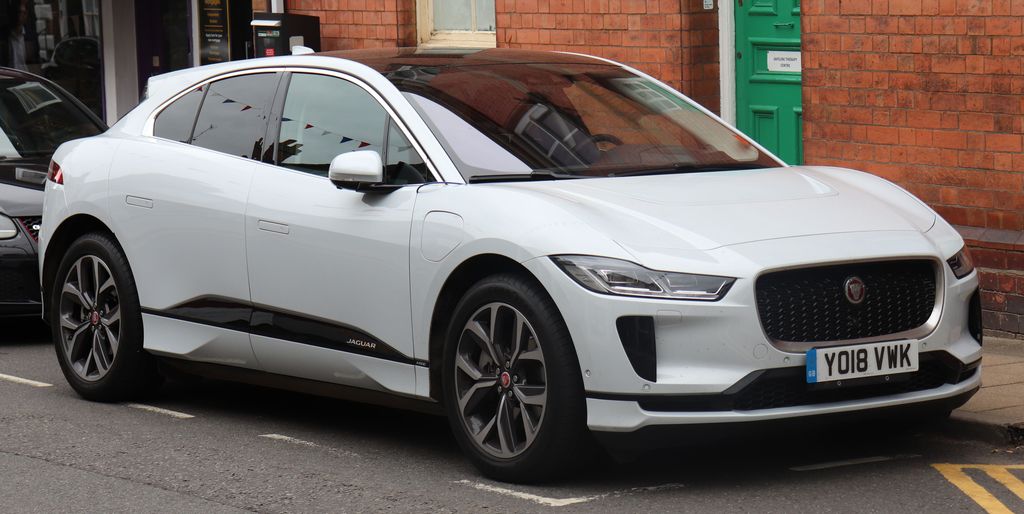
9. **Jaguar (I-PACE)**Jaguar’s I-PACE was a stylish and ambitious entry into the luxury electric SUV segment, praised for its design and driving dynamics. However, despite its premium positioning, the I-PACE has been associated with a higher incidence of battery-related issues and concerns about long-term degradation compared to rivals. These issues have chipped away at consumer confidence and questioned its long-term value.
A significant concern revolves around the I-PACE’s battery management system (BMS) and its ability to optimize battery health. While it features liquid cooling, some reports suggest its BMS isn’t as finely tuned or proactively protective as those from brands with more EV experience. This can lead to varied degradation rates and inconsistent cell health under diverse driving and charging conditions, resulting in unexpected capacity losses.
Furthermore, some I-PACE owners reported software glitches impacting battery performance, range prediction, and charging. Persistent issues erode trust in long-term reliability. Financial implications for out-of-warranty battery issues are substantial given the luxury segment and high battery costs. Such unexpected expenses diminish used market appeal, where replacement costs are a critical factor. The I-PACE highlights the complexities luxury automakers face when transitioning to EVs, where battery longevity is paramount for brand reputation.
Car Model Information: 2022 Jaguar I-PACE HSE EV400 AWD Automatic
Name: Jaguar I-Pace
Manufacturer: Jaguar Land Rover
Production: 2018–2024
Assembly: Magna Steyr
Designer: Ian Callum
Class: Compact crossover SUV#Luxury vehicles
BodyStyle: coupé SUV
Layout: all-wheel-drive
Platform: Jaguar Land Rover car platforms#D7e
Motor: Permanent magnet synchronous motor
Abbr: on
Transmission: 1-speed direct-drive reduction
Battery: kW·h,Lithium-ion battery
ElectricRange: United States Environmental Protection Agency
Charging: 11kW AC (7.4kW “1-phase/32A only” AC 2018–2020),100 kW DC
Wheelbase: 2990 mm
Length: 4682 mm
Width: ubl
Height: 1565 mm
Weight: 2133 kg
Sp: uk
Categories: 2020s cars, All-wheel-drive vehicles, All accuracy disputes, All articles lacking reliable references, All articles with specifically marked weasel-worded phrases
Summary: The Jaguar I-Pace (stylised as I-PACE) is a battery-electric crossover SUV produced by Jaguar Land Rover (JLR) under their Jaguar marque. The I-Pace was announced in March 2018, European deliveries began in June 2018 and North American deliveries started in October 2018. Amid slowing sales and a change in corporate vision, Jaguar has announced that the I-Pace will be discontinued by 2025.
Get more information about: Jaguar I-Pace
Buying a high-performing used car >>>
Brand: Jaguar Model: I-PACE
Price: $34,499 Mileage: 44,699 mi.

10. **Mercedes-Benz (EQC and Early EQ Models)**Mercedes-Benz, synonymous with luxury and engineering, ventured into EVs with its EQ sub-brand and models like the EQC. While these early EQ offerings delivered premium comfort and technology, their journey has been hampered by battery performance and longevity concerns compared to other luxury EV manufacturers. This created a perception that Mercedes-Benz’s initial EV battery strategies were not as robustly developed as their overall vehicle quality.
A primary challenge with the EQC and early EQ models concerned battery efficiency and thermal management effectiveness. Despite liquid cooling, the overall integration and optimization sometimes failed to prevent higher degradation rates for some owners, especially with frequent fast charging or in demanding climates. The relatively high energy consumption, combined with batteries struggling to maintain peak health, occasionally led to real-world ranges falling short of expectations as batteries aged.
These experiences, while not universal, contributed to consumer apprehension regarding long-term battery health and resale value. For a brand commanding premium prices, even isolated reports of accelerated degradation impact its reputation for unwavering reliability. Replacing a high-capacity battery pack in a luxury EQC can be prohibitive post-warranty, undermining long-term financial viability. As Mercedes-Benz refines its EQ lineup, it must reassure the market that latest battery technologies address early concerns, ensuring future EQ vehicles deliver on the brand’s legendary promise of enduring quality and performance.
As we navigate the rapidly evolving EV landscape, it’s clear that not all battery stories are equal. While pioneering brands engineer solutions for remarkable longevity, some early models present cautionary tales. The spectrum of battery performance, from Tesla’s durability to the Bolt’s challenges, underscores robust design, sophisticated thermal management, and intelligent software’s critical role in determining an EV’s true long-term value. For consumers, this journey through EV battery technology is a vital guide. It highlights that discerning buyers must look beyond initial range and charging speeds to thoroughly evaluate a vehicle’s holistic battery architecture, its manufacturer’s commitment to improvement, and warranty specifics. Only then can they confidently invest in an electric future that is not only thrilling and sustainable but also reliably enduring. The future of EVs isn’t just about going electric; it’s about going electric with confidence and lasting performance.


